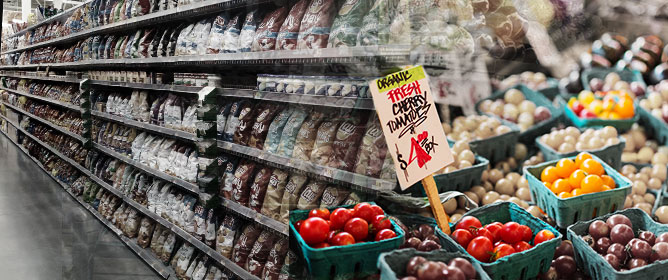Need Help?
20 December 2017
Feature Paper: Food Prices and Diet Quality

"We found that, on average, healthier perishable foods were nearly twice as expensive as unhealthy packaged foods” said Kern, lead author of the study in a recent issue of the journal. “As the gap between neighborhood prices of healthier and unhealthier foods got wider, study participants had lower odds of having a healthier diet.”
For example, the study found that for every 14 percent increase in the healthy-to-unhealthy price ratio (the standard deviation in this study), the odds of having a healthy diet dropped by 24 percent. This was even after controlling for personal characteristics, like age, sex, income, education and other factors. : “We are consuming way too many sugary foods like cookies, candies and pastries, and sugary drinks, like soda and fruit drinks,” co-author Auchincloss said. “Nearly 40 percent of U.S. adults are obese and less than 20 percent attain recommendations for fruits and vegetables. Cheap prices of unhealthy foods relative to healthier foods may be contributing to obesity and low-quality diet.”
To delve into price impacts, the authors used cross-sectional data from 2,765 participants recruited from six urban areas in the U.S.: New York, Chicago, St. Paul, Los Angeles, Baltimore and Winston-Salem in North Carolina. Each participant’s diet data was linked to food prices at supermarkets in their neighborhood. This is one of the few studies that takes a hard look at prices between foods, compares them, and tries to link them back to their dietary implications.
Translating the price difference found in this study into US dollars: on average, five servings of healthier perishable foods cost $3.00 while 5 servings of unhealthier packaged foods cost $1.55.
The adverse impact of increasing healthy food prices compared to unhealthy food prices was particularly strong for people in the middle ranges of income/wealth in the study, and those with higher education. “We originally expected to find the largest impact among individuals in the lowest wealth/income group. However, given the price gap that we found, healthy food may be too expensive for the lowest socioeconomic status group even at its most affordable,” Kern said. “So the impact of the price ratio is weaker for this group.”
For further information about this research, see: http://drexel.edu/now/archive/2017/November/When-Healthier-Food-Price-Closer-to-Unhealthier-Diets-Are-Better/

